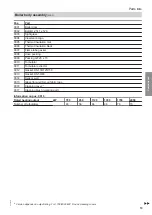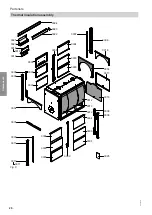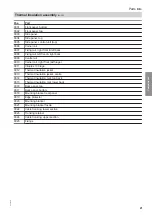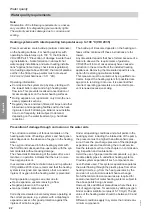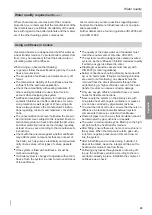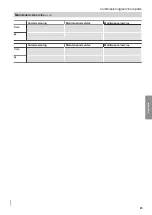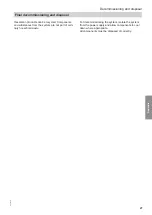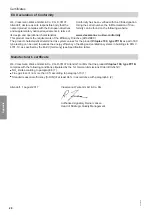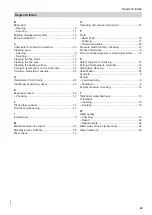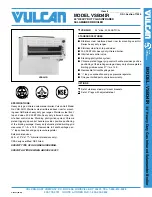
22
Note
Observation of the following requirements is a neces-
sary condition for safeguarding your warranty rights.
The warranty excludes damage due to corrosion and
scaling.
Heating systems with rated operating temperatures up to 100 °C (VDI 2035)
Prevent excessive scale build-up (calcium carbonate)
on the heating surfaces. For heating systems with
operating temperatures up to 100 °C, the Directive
VDI 2035 Part 1 "Prevention of damage in water heat-
ing installations - Scale formation in domestic hot
water supply installations and water heating installa-
tions" applies [in Germany; check local regulations].
At a heating output above 600 kW, the total of alkaline
earths in the fill and top-up water must not exceed
0.02 mol/m
³
(total hardness < 0.11 °dH).
Operating information:
■
Commission the system step by step, starting with
the lowest boiler output and a high heating water
flow rate. This prevents localised concentration of
limescale deposits on the boiler heating surfaces.
■
During expansion or repair work, only drain the nec-
essary pipework sections.
■
Regularly check and clean filters, dirt traps and other
blow-down and separating facilities within the heat-
ing water circuit: Following an initial or new installa-
tion do so frequently, later subject to demand,
depending on the water treatment (e.g. hardness
reduction).
The build-up of limescale deposits on the heating sur-
faces will be minimised if these instructions are fol-
lowed.
Any limescale deposits that have formed because of a
failure to observe the requirements of guideline
VDI 2035 will in most cases already have caused a
reduction in the service life of the installed heating
appliances. Removing the limescale deposits is one
option for restoring operational viability.
This measure must be carried out by a qualified con-
tractor. Inspect the heating system for possible dam-
age prior to returning it into use. It is essential that
incorrect operating parameters are corrected to pre-
vent renewed excessive scaling.
Prevention of damage through corrosion on the water side
The corrosion resistance of ferrous materials on the
heating water side of heating systems and heat gener-
ators depends on the absence of oxygen in the heating
water.
The oxygen introduced into the heating system with
the first fill and subsequent top-ups reacts with the sys-
tem materials without causing damage.
The characteristic blackening of the water after a cer-
tain time in operation indicates that there is no more
free oxygen present.
In accordance with the technical rules and in particular
VDI guideline 2035-2, we recommend that the heating
system is designed and operated so that a constant
ingress of oxygen into the heating water is prevented.
During operation, oxygen can enter due to:
■
Open expansion vessels receiving a flow
■
Negative pressure in the system
■
Gas-permeable components
Correctly sized sealed unvented systems operating at
the correct pressure, e.g. systems with a diaphragm
expansion vessel, offer good protection against the
ingress of airborne oxygen.
Under all operating conditions and at all points in the
heating system, including the intake side of the pump,
the pressure must be higher than atmospheric pres-
sure. Check the pre-charge pressure of the diaphragm
expansion vessel at least during the annual service.
See the relevant section in the chapter on commission-
ing, inspection and maintenance.
Avoid the use of gas-permeable components, e.g. per-
meable plastic pipes in underfloor heating systems.
Provide system separation if such components are
nevertheless used. This system separation separates
the water flowing through the plastic pipes from other
heating circuits, e.g. from the heat generator, by the
provision of a corrosion-resistant heat exchanger.
No further anti-corrosion measures are required for
sealed unvented hot water heating systems subject to
the above points being observed.
However, take additional precautions where there is a
risk of oxygen ingress, for example by adding oxygen
binder sodium sulphite (surplus of 5-10 mg/l). The pH
value of the heating water should be between 9.0 and
10.5.
Different conditions apply to systems that include alu-
minium components.
Water quality
Water quality requirements
5461424
Appendix












